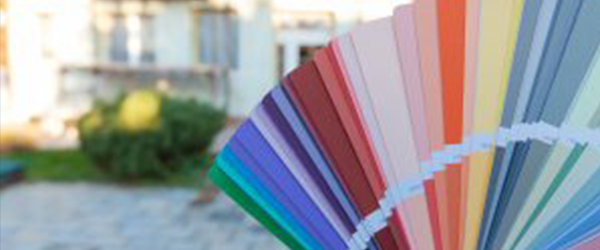Belman Homes president and host of the Home Building Hero podcast, David Belman, shares some observations from his trip to the International Builders Show.
Accent Colors
With mattes and warm, earthy tones, subtle elegance is woven through the most prominent 2019 color themes, from hardware accents to alternative appliance finishes to wall paint. In the hardware arena, for example, French gold finishing is creeping into prominence across hardware types. With the potential for overuse, the integral dosing of French gold can add a noticeable touch of class to accent hardware, such as by adding a thin vein on color to light fixtures.
For paint colors, 2019 is seeing two main accent colors: Alaea (Sherman Williams color #7579), which is a neutral blush, and Cavern Clay (Sherman Williams color #7701). Both accent colors are warm and versatile, each adding a hint of color when used sparingly or as a contrast element, such as to create an accent wall.
Appliance and Hardware Colors and Trends
For more prominent pieces, like large kitchen appliances, matte black is hot right now. Matte black stainless steel appliances create a clean looking environment that compliments popular modern industrial home looks but feels a little softer than traditional metal and concrete. This softer look is so well received that plumbing and other hardware manufacturers are working to catch up with the industry shift following the rise in popularity of matte black stainless steel appliances. The rise in popularity in matte black appliance finishes has already spread from the kitchen to the bathroom, in both cases being commonly paired with white or light gray marble or granite countertops and backsplashes.
Even countertops are getting a bit of a makeover as the cost of quartz trends down. Crushed quartz is popular because it has the elegance of marble with better durability for use in a cooking environment. Gray quartz can also be made to look like stainless steel or brushed metal, which can optimize the look of an industry-inspired kitchen without the heat transfer problems posed by a metal workspace.
The expansion of hardware color trends into the matte black arena is consistent with the shift in popularity over recent years toward simple, contemporary modern industrial looks. The industrial influence can be seen this year in the size of certain functional elements and not merely in the material and shape selection. Cabinetry offers an easy platform for inexpensively updating the look of a room because the hardware is relatively universal and can be easily swapped without much know-how or professional assistance. In 2019, homeowners are using larger pieces of hardware for things like cabinet door handles to create a more modern look with existing fixtures.
While certain hardware trends, such as for cabinetry, are favoring larger elements, others, such as faucets and other plumbing hardware, are tending toward lower profile statements. 2019 is seeing faucets with smaller pitch and sharper angles, including styles with more wall integration where the visible faucet juts out perpendicularly from the wall and other styles that more closely resemble scaffolding or works of 3-D art.
Flooring
An artistic influence is also prominent in flooring trends and tile accents. Notably, multiple new uses of the classic chevron pattern are seen in accent tiling for things like backsplashes where the tiles themselves are arranged to create pops of chevron-shaped color patterns. Such statement pieces are both functional and can add a nice touch of character to an otherwise stark space. Use of smaller tiles in different geometric patterns is also increasingly popular in flooring, particular in hexagonal patterns or in arrangements that allow for framing.
Carpet design is also seeing some artistic innovation, particularly with coloring and patterns that add texture and depth. As homeowners tend away from wood and wood paneling, color texturing in carpet can create the look and feel of wood while providing the plush comfort and homeyness of indoor carpet. Mohawk’s ‘Absolute Fame,’ for example, gives the appearance of bamboo while providing all the benefits of carpeted flooring.
Patterns
Interior doors have moved toward a compartmentalization of their own as designers look to add character to the traditionally plain inside door. Patterns are created by breaking up the door itself into panels or panes and using different materials to create both added functionality and visual stimulation. For example, doors comprised of two glass panes separated by built-in blinds provide the pass-through natural light of glass with the privacy option of blinds without any of the dust build-up or damage that can come from everyday use.
Finally, the low cost and high versatility of LED technology has enabled a sort of interior lighting revolution where the light source and fixture effectively become one. LED lights do not have the same limitations as traditional bulbs that are bulky and give off an appreciable amount of heat. LEDs, rather, can be safely grouped together or even embedded in the material of a light fixture such that track lighting can actually appear as a track of light as opposed to a long or wavy metal fixture supporting a set of discrete light bulbs.







